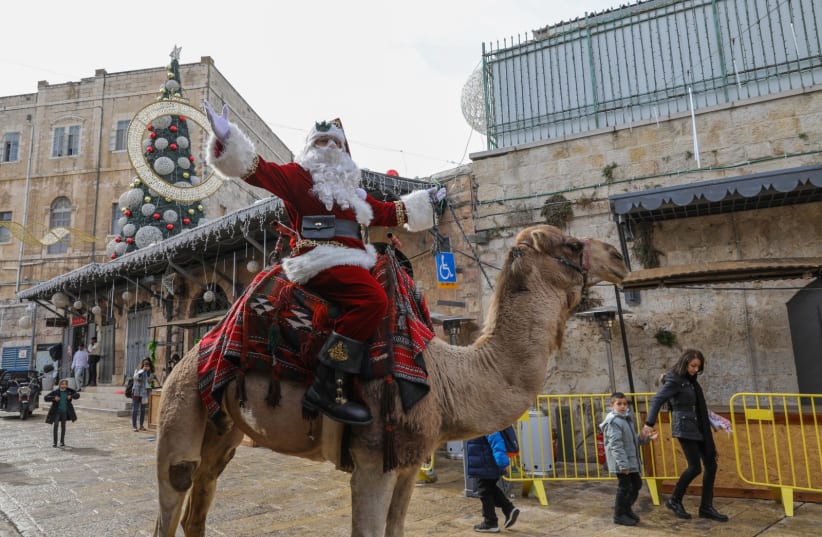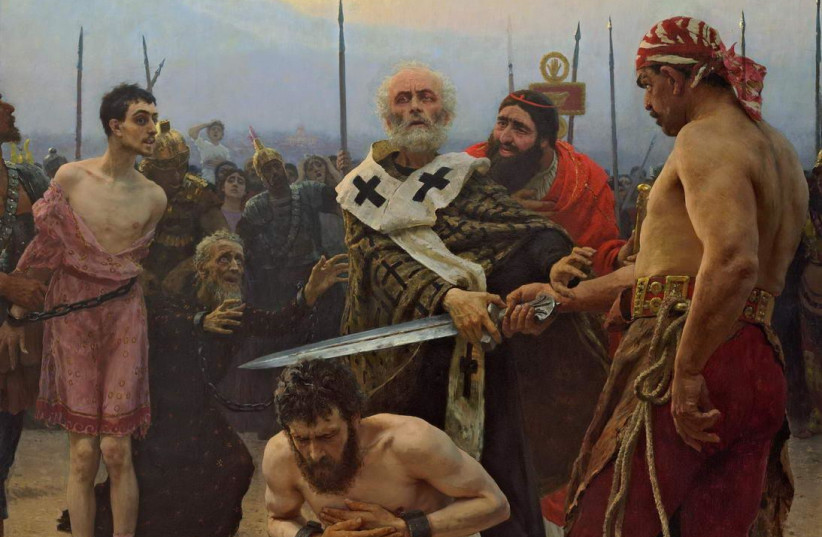Archaeologists may have found the original grave of Santa Claus in Turkey, according to Turkish media reports.
Good old Kris Kringle himself has long been dismissed by many as a purely mythical or even commercial figure, created to help popularize and establish legend and childhood whimsy around the holiday of Christmas.
But while Santa Claus as we know it is, in fact, nothing more than a myth who was never real to begin with - sorry, kids! - he was based on a real person: Saint Nick, also known as St. Nicholas.
Who was the real Santa Claus?
St. Nicholas was born in what is now Turkey and served as a bishop in a small town that was once known as Myra and is now called Demre.
Having been around since the waning days of the Roman Empire, St. Nicholas has been the subject of a vast number of legends during his lifetime, even if very little is actually known about his life itself.
Famously, he supposedly chopped down a demon-possessed tree, stopped a storm, saved girls from prostitution through generosity, brought three people back to life and got into brawls at the First Council of Nicaea.
This was just while he was alive though. After he died, numerous miracles were also attributed to St. Nicholas, which is part of how one becomes canonized as a saint in the first place.
Today, St. Nicholas is the patron saint for a number of sectors, including sailors, brewers, archers, children, unmarried people, merchants, repentant thieves and pawnbrokers, among others.
However, it was his generosity with his wealth, giving it to so many people, that helped him become the inspiration for the figure eventually known as Santa Claus.
Admittedly, he wasn't the sole inspiration for the Christmas gift giver who scours the world each year, delivering gifts or coal after having conducted surveillance on seemingly all of humanity in order to decide if they were naughty or nice. Other figures, such as Odin, also played a part in that.
But after St. Nicholas died, he was buried somewhere in the ground at his church, and a new church was built atop his old one per the order of Roman Emperor Theodosis II.
But there's a problem: We already know for certain where St. Nicholas is buried, and it certainly isn't in Turkey.
Here comes Santa Claus, here comes Santa Claus, buried in Italy!
The location of the remains of saints as well as their associated relics have long been the subject of considerable scientific and academic interest.
In early Christianity, pilgrimages to the remains and relics of saints were an important part of the religion, and these pilgrimages had considerable social and economic ramifications. As such, these were typically spread out to different churches all over Christendom. In other words, a saint's remains would likely be in a number of countries at once.
St. Nicholas is an exception. Fascinatingly, almost all of his remains have, for nearly a thousand years, been consolidated and preserved in one single spot: His grave in Bari, Italy.
But how did he get there? Well, for that, we can point to geopolitical shifts, Islamic conquests and the Crusades.
Back in the 11th century, the Byzantine Empire, which controlled Anatolia at the time, lost much of said territory to a new invading force: The Seljuk Turks. This also came as the great schism between the Catholics and the Greek Orthodox churches grew in intensity. All of this meant two things:
- The Byzantines, who were Greek Orthodox, no longer had control over the tomb of St. Nicholas
- Christians feared that they wouldn't be able to access the tomb anymore
How was this solved? By grave robbery.
In 1087, a group of Italian sailors from Bari, who were Catholic, stole the remains of St. Nicholas and brought them back to Bari. This was widely recorded in multiple historic texts and chronicles, and so the events were widely considered reliable.
For the people of Bari, this was a rescue mission. To the Turks and Greek Orthodox Christians, it was holy theft.
His remains were interred in a new church, inaugurated by Pope Urban II, known as the Basilica di San Nicola, where they remain to this day. they have only been moved a select few times, including in 2017 when some of the remains were loaned to Moscow.
Admittedly, other remains are also present in Venice. This was recorded in a single chronicle from the time, which said Venetian ships with crusaders took all the minor bone fragments the Bari sailors couldn't take, and brought them to Venice. Whether or not this is St. Nicholas is up for debate, as is whether the bones in Bari are of the saint, but studies have shown that the bones in Venice and Bari are likely of the same person.
But all of this raises the question: If St. Nicholas is buried in Bari and Venice, then what did scholars in Turkey find?
The answer is the saint's original resting place, the exact specific spot where he was buried before his bones were pilfered.
Excavations conducted in the interior of the church in Demre, which bear architectural similarities to the Church of the Holy Sepulchre in Jerusalem, have found the floor of the original church where St. Nicholas was bishop.
In fact, the similarities to the Church of the Holy Sepulchre are actually relevant to this, as it was these similarities and the location of a fresco of Jesus that seem to hint at the exact location, according to LiveScience.
This was difficult at first, because when the Bari sailors stole the bones, they moved the sarcophagus, thus making it harder to tell where it originally was.
It is possible, according to Antalya Cultural Heritage Preservation Regional Board president Prof. Dr. Osman Eravşar, that there may even be some remains or relics there too, according to Turkish media outlet DHA.
But there are problems. After all, rising sea levels have left parts of the original church now flooded.
It remains to be seen if any trace of the original Santa Claus can be found in Turkey.
Otherwise, you could just go to Bari and Venice - or the North Pole.

